Growth
Growth by:Segregated Diffusion Limited Aggregation (DLA) The
user may select TOITALIZING rules or PATTERNED rules for encountering neighbors, which will cause a wandering agent to settle down (become fixed). There are three kinds of agents: CYAN, MAGENTA and YELLOW. Consequently segregated communities form depending on the RULES you write. |
||
XE6 Growth - 3 March 2016: Rules have been rearranged and segregation rules have been corrected. Agent edit box counts agents as they are placed on the screen by the user. Zoom has not been implemented. However images can be enlarged by integer multiples in PhotoShop using the "Nearest Neighbor (preserve hard edge)" option. See image sizing box as it appears when you first open it and how it should appear before you click "OK". Here are examples of 3x enlargements of rule 7: |
||
September 2008 Revised version which includes: Some patterns: |
||
|
|
You may select up to four PATTERNS (in order to keep things symmetrical) which will cause the agent to STICK. All patterns are
relative to the agent in the center. You may select a variety of totalizing RULES in the ComboBox. |
|
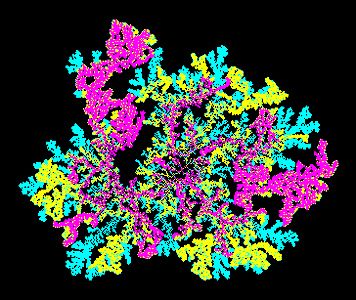 = =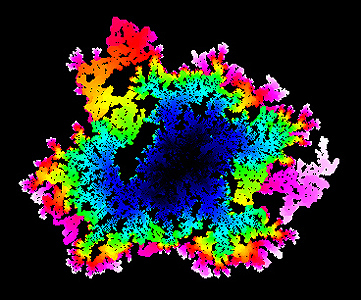 Agents colored by KIND. =========================== Agents colord by AGE. Two views (shown actual size) of the same demographic pattern produced by different rules for different kinds: CYAN wants to settle near X neighbors of xxx kind. MAGENTA wants to settle near X neighbors of xxx kind. YELLOW wants to settle near X neighbors of xxx kind. Where X is set by the TrackBar and alternates between 2 and 3. The preference is set to 3 until settlement stops, then backed down to 2 to resume settlement. Once settlement resumes for a short while, the preference is again cranked up to 3. And so on... Click on pictures for a 2x enlargement. |
||
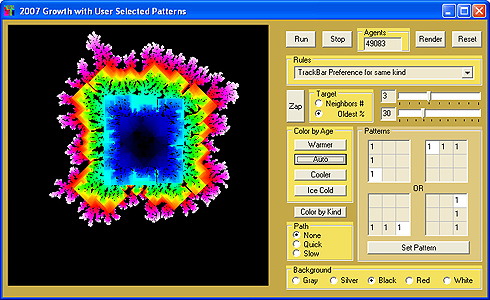 |
||
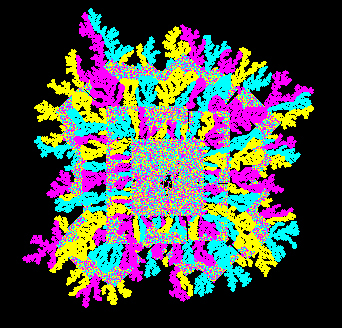 = =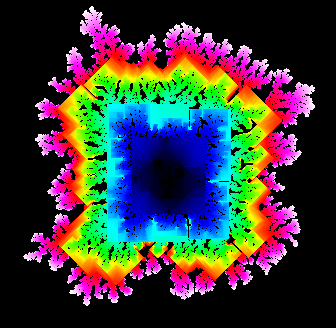 = =
Agents colored by KIND. =========================== Agents colord by AGE. Two views (shown actual size) of the same demographic pattern produced by a sequence of different historical epochs in which totalizing RULES alternate with PATTERNS and preferences for KIND alternate with no preferences. Click on pictures for a 2x enlargement. |
||
|
Can
you deconstruct the rules that created the following patterns? |
||
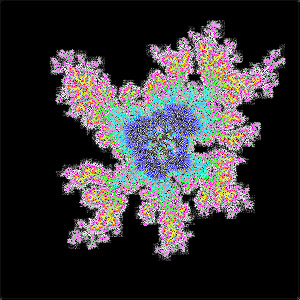 == ==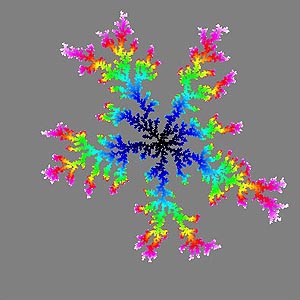 |
||
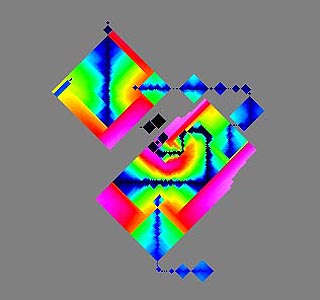 == ==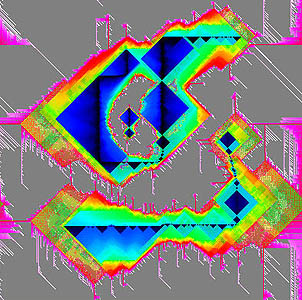 |
||
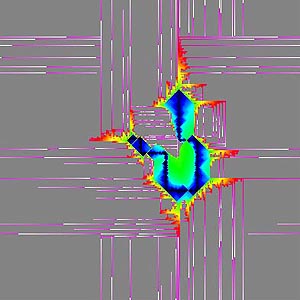 == ==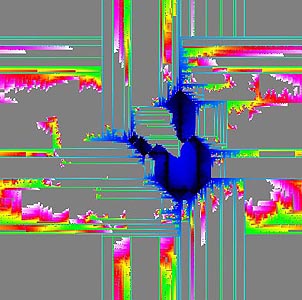 |
||
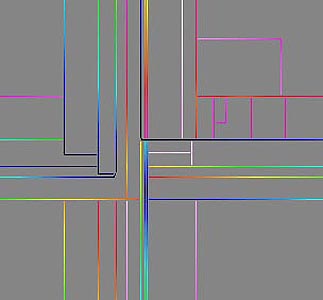 == ==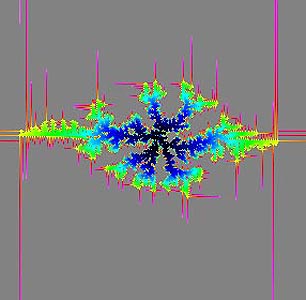 |
||
|
|
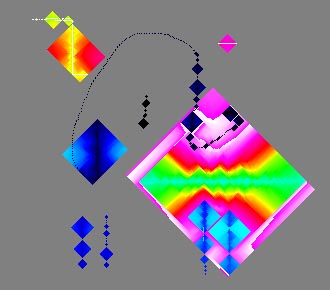 |
|
| Growth - 2006 Stick Exclusively to Horizontal or Vertical Edges In this modification, an agent will only stick to a particular configuration of fixed agents, specifically a neighboring row or column of three fixed agents. MouseDown, MouseMove and MouseUp events are used to draw fixed agents on the screen. The code is generalized and can be easily modified to search for other patterns of neighboring agents. |
The actual-size screen-grab above shows the complexity of the filling patterns. The colorRamp( ) function has been simplified to start at the Black end of the spectrum. |
|
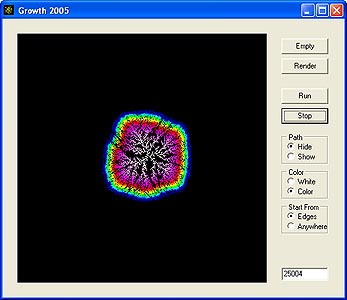 |
Growth by Diffusion Limited Aggregation See the variations at the bottom of this page... |
|
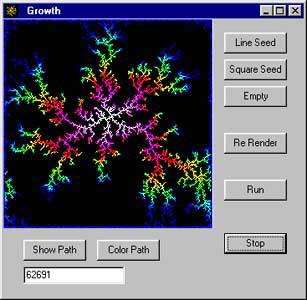 |
Growth by Diffusion Limited Aggregation |
|
Some Variations Enlarged
|
Agents
inserted from edges...
|
Agents
inserted from anywhere...
|
|
|
Any |
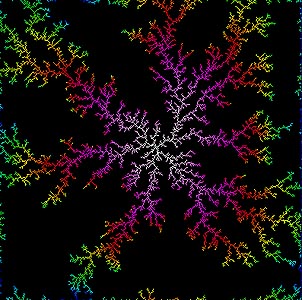 |
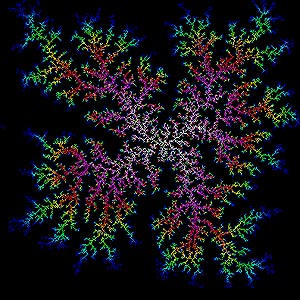 |
|
Any |
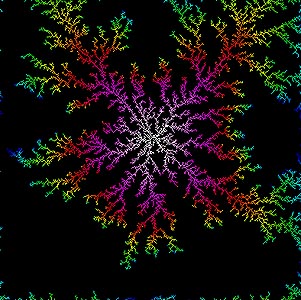 |
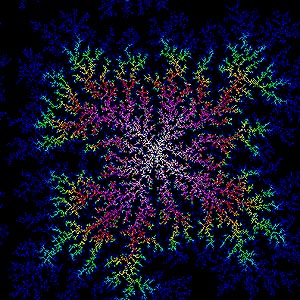 |
| Any neighbor at least 50 older |
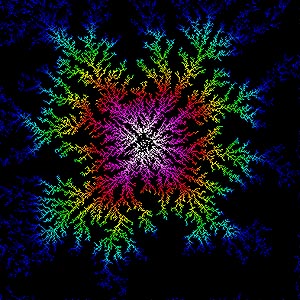 |
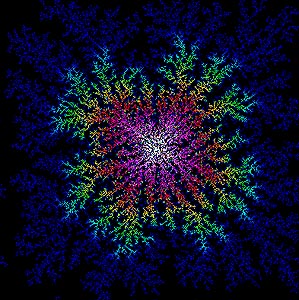 |
| Any neighbor at least 95% older |
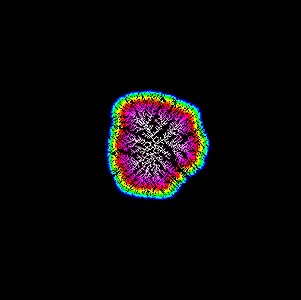 |
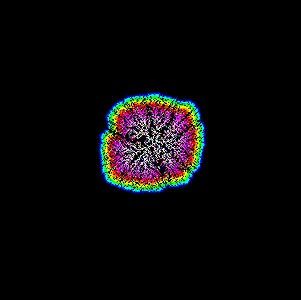 |
|
Same,
but with reversed color ramp.
|
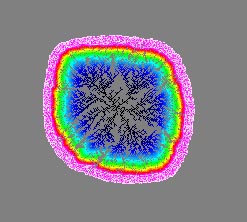 |